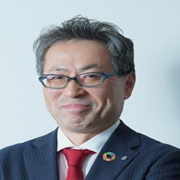
Prof. Taisuke Sakaki
Kyushu Sangyo University, Japan
Title: Rehabilitation robotics applied to integrated community care system in Japan
Abstract:
As Japan’s total population is projected to decline, the number of elderly people aged 65 and over is expected to surge, with the elderly accounting for 30% of the population. In such a super-aged society, it is challenging for medical institutions, care facilities, and local communities to cope on their own. Therefore, the national government and the Ministry of Health, Labor and Welfare are promoting a ‘Community-based Integrated Care System’ where housing, medical care, nursing care, prevention, and living support are provided in an integrated manner. However, due to the decrease in the younger population leading to a shortage of labor, there are difficulties in realizing the system. The specific challenges include the following.
1. Maintaining Walking Function of the Elderly: In Japan’s super-aged society, strokes are a serious concern. When an individual experiences paralysis due to a stroke, walking becomes difficult, often leading to the need for care. To prevent this, promoting regular walking exercises is a crucial challenge in the local community.
2. Fall Prevention for the Elderly: Many elderly individuals suffer fractures, head injuries, and spinal cord damage due to falls, which can result in the need for care. Preventing falls is essential for controlling the number of elderly individuals requiring care. Practical fall risk assessment methods are urgently needed.
3. Elderly Monitoring at Home: Monitoring elderly individuals living at home within the community is a cornerstone of the care system. However, due to a shortage of manpower, assessing the elderly’s condition, influencing their lifestyle habits, and promptly reporting emergencies to hospitals remain challenging.
4. Workstyle Reform and Productivity Improvement for Caregivers: There is a high demand for improving productivity in the caregiving field. Achieving this involves not only reducing the risk of back pain among caregivers but also reforming their work practices to enhance overall productivity.
5. Supporting Mobility for Elderly and Disabled Individuals: Embracing the SDGs principle of “leaving no one behind,” supporting individuals with severe disabilities to participate actively in society—even in the face of an aging population—is an urgent task toward creating an “inclusive society for all.”
The Human Robotics Research Center (HRRC) at Kyushu Sangyo University was established in 2013 as a practical research center designed for rehabilitation and caregiving support robots. The HRRC implements robots for the medical and caregiving sectors, addressing issues within these fields.
This presentation introduces multiple robotics research projects. The technologies will be applied to the regional integrated care system to improve and optimize service processes in real-time. The system provides cost-performance management data regarding caregivers, care recipients, caregiving facility budgets, and government budgets. Based on these calculations, the operational plan is adjusted to match the appropriate care level, aiming to maintain a balance in caregiving situations and alleviate budget constraints. Specifically, the research results for a walking rehabilitation robot for stroke hemiplegia patients, a fall risk assessment method for the elderly, a protection system for the elderly, an assist suit for caregivers as technology for work reform and productivity improvement in elderly care facilities, a caregiving lift, and a mobility support robot for individuals with total paralysis are presented.

Biography:
Taisuke Sakaki is a professor of mechanical engineering, and senior researcher of Human Robotics Research Center, Kyushu Sangyo University (2003-present). He received his MS degree in Applied Mathematics from Kyushu University in 1985, and his Ph.D. thesis in Applied Physics from Tokyo University in 1993. He worked at Research Laboratory of Yaskawa Electric Corporation from 1985 to 1993. He was a guest researcher at Mechanical Engineering Laboratory of MITI from 1987 to 1989, joining the national research project of maintenance robot in nuclear power plant. He was a project manager at Yaskawa, developing the Therapeutic Exercise Machine, rehabilitation robot assisting recovery of basic functions of lower extremities for stroke patients from 1993 to 1999. Also, he joined the national project as a project manager of Yaskawa at Rehabilitation System for Upper and Lower Limbs Project of NEDO (New Energy and industrial technology Development Organization), developing a rehabilitation robot for the recovery of walking functions for stroke patients from 1999 to 2003. His present interests involve robotics for assisting elderly and rehabilitation. His areas of interest are robotics, mechatronics and human interface applied for assisting elderly and rehabilitation areas. His research aims are to develop interface technologies with the optimal combination of motion and information for facilitating recovery or maintaining functions of patients and elderly people. He is a member of the Japan Society of Mechanical Engineers, the Robotics Society of Japan and the Society of Instrument and Control Engineers.